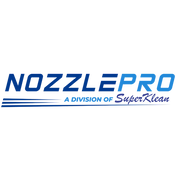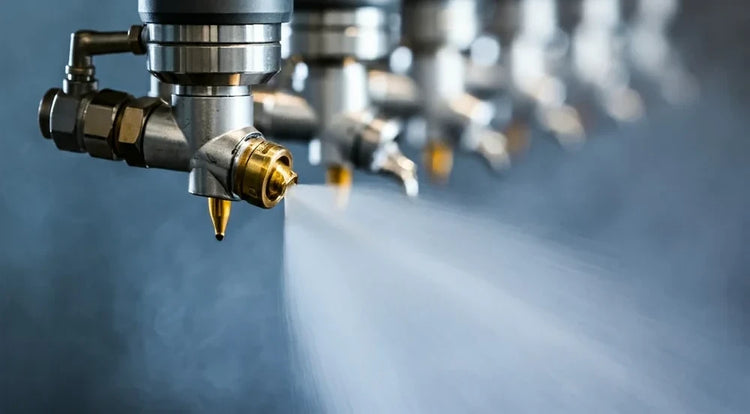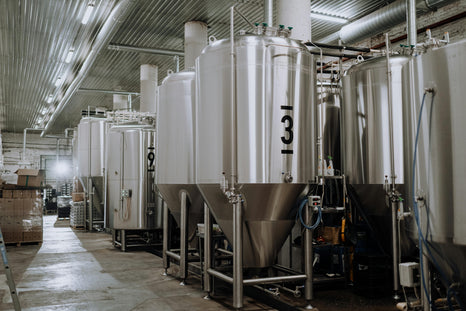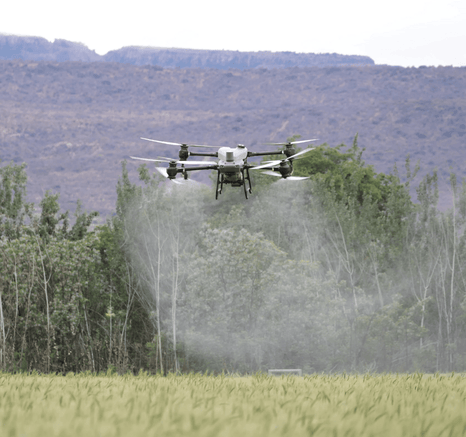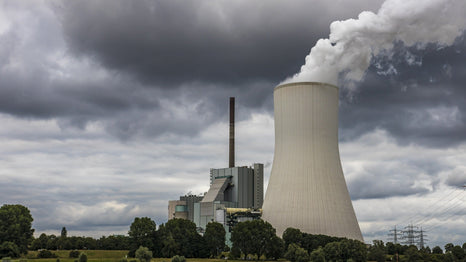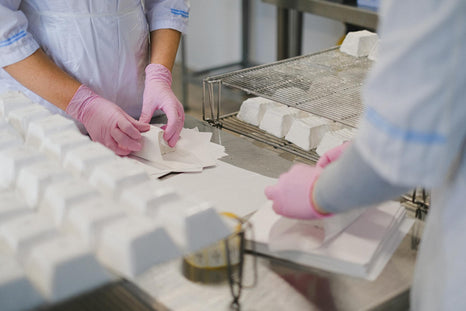Key Takeaways
-
Wider angles cover more surface but with less impact force, while narrow angles deliver concentrated cleaning power to smaller areas.
-
Doubling your pressure doesn't double your flow, it increases by approximately 1.4x, following the square root relationship (Flow ∝ √Pressure).
-
Properly matched spray angle and flow rate can reduce water consumption by 20-40% while improving cleaning effectiveness.
- Mismatched nozzle specs lead to uneven coverage, excess water usage, and higher energy costs, problems that proper calibration easily prevents.
Why Spray Angle and Flow Rate Matter More Than You Think
Walk into any industrial facility and you'll find spray systems working hard– cleaning parts, rinsing equipment, cooling metal, or sanitizing production lines. But here's what most operations miss: the two variables that make or break your cleaning efficiency aren't how expensive your system is or how much pressure you're running. It's spray angle and flow rate.
Get these wrong and you're essentially throwing water and energy at problems that precision could solve. Get them right and you'll see better coverage, less waste, and significantly lower operating costs. Let's break down exactly how these variables work and how to optimize them for your specific application.
Understanding Spray Angle: Coverage vs. Impact
Spray angle is measured at the nozzle orifice and determines the geometry of your spray pattern. Think of it like a flashlight beam, narrow focuses light intensely on a small area, while wide spreads it across a broader space.
Common Industrial Angles and Their Uses
0° (Jet Stream): Essentially a straight shot with maximum impact. Perfect for cutting, drilling, or removing stubborn deposits where concentrated force matters more than coverage.
15°-25° (Narrow Cone): Delivers strong impact over a focused area. Ideal for high-pressure part washing where you need aggressive cleaning in tight spaces or on heavily soiled surfaces.
40°-65° (Medium Cone): The workhorse of industrial cleaning. Balances impact force with reasonable coverage, making it versatile for general washing, rinsing, and coating applications.
110°+ (Wide Cone): Maximizes coverage with gentler impact. Excellent for even distribution in rinse cycles, tank cleaning, or applications where you need to blanket a large area without damaging delicate surfaces.

The Coverage Calculation
Here's where distance matters: as you move a nozzle farther from the target surface, the coverage width increases but impact force decreases. A 25° nozzle spraying from 12 inches away covers roughly 5 inches of width. Move it to 24 inches and you'll cover about 10 inches, but with noticeably less cleaning power per square inch.
This relationship is critical for designing conveyor cleaning systems or multi-nozzle arrays. Understanding the coverage width at your specific mounting distance helps you space nozzles correctly to avoid gaps or wasteful overlap.
Flow Rate and Pressure: The Dynamic Duo

Flow rate measures the volume of fluid passing through your nozzle per unit time, typically gallons per minute (GPM) or liters per minute (L/min). While pressure gets all the attention in industrial settings, flow rate is equally important for determining cleaning efficiency.
The Pressure-Flow Relationship
Here's the math that matters: Flow ∝ √Pressure
This square root relationship means pressure changes affect flow in a non-linear way. If you increase pressure from 40 PSI to 160 PSI (4x increase), your flow rate only doubles. Similarly, if you want to double your flow rate, you need to quadruple your pressure.
Why does this matter? Because many operators assume cranking up pressure proportionally increases cleaning power. In reality, you're consuming exponentially more energy for diminishing returns.
Droplet Size and Impact Force
Pressure also affects droplet characteristics. Higher pressure creates smaller droplets with greater velocity, increasing impact force, crucial for removing baked-on residues or surface contaminants. Lower pressure produces larger droplets that deliver volume without aggressive impact, better for rinsing or applying chemicals gently.
The sweet spot depends entirely on your application. Optimizing this balance can reduce water consumption by 30% while maintaining or improving cleaning results.
Optimizing for Real-World Efficiency

Getting technical specifications right on paper is one thing. Making them work in your facility is another. Here's how to optimize the angle-flow-pressure triangle for maximum efficiency.
Balancing the Three Variables
Start with your cleaning requirement: What are you removing? Oils and light soils need less impact than burnt-on carbon or scale. Match your pressure and angle to the job, not to what your pump can deliver.
Calculate coverage patterns: For conveyor systems or automated cleaning, map out nozzle spacing based on spray angle and mounting distance. Most applications benefit from 10-20% overlap between adjacent spray patterns to ensure complete coverage without excessive waste.
Monitor actual consumption: Install flow meters to track real water usage. Many facilities discover they're using 2-3 times more water than necessary simply because nozzles were never properly sized or have worn beyond spec.
Energy and Water Savings
Efficiency isn't just about cleaning effectively but also about using minimum resources to achieve your results. Properly matched spray nozzle tips can deliver dramatic savings:
-
Reduced pumping costs: Lower required pressure means less energy consumption from pumps and compressors.
-
Water conservation: Optimized flow rates eliminate waste while maintaining cleaning effectiveness.
- Faster cycle times: Better coverage and impact can reduce dwell time, increasing throughput.
Application-Specific Examples
Let's look at how different industries apply these principles to solve real cleaning challenges.
High-Pressure Part Washing
Automotive component cleaning requires aggressive removal of machining oils, metal chips, and grinding residues. The solution: narrow angle nozzles (15°-25°) at 800-1500 PSI delivering 2-4 GPM. This combination provides the impact force needed to blast contaminants from complex geometries while minimizing water usage. Learn more about industrial spray nozzles for parts washing.
Food & Beverage Rinsing

After CIP (clean-in-place) chemical cycles, thorough rinsing removes all cleaning agent residues. Wide angle nozzles (65°-110°) at moderate pressure (40-100 PSI) deliver even coverage across tank walls, filling equipment, and production lines. The goal here isn't impact. It's complete, uniform distribution to flush away chemicals without leaving spots or streaks.
Metal Processing Cooling and Quenching
Controlled cooling of forgings, castings, or heat-treated parts requires precise water application. Medium angle nozzles (40°-65°) with high flow rates (10-20 GPM at 60-150 PSI) deliver volume for rapid heat extraction while maintaining even cooling patterns that prevent warping or stress cracking. Different spray nozzle types serve various metal processes from direct quenching to indirect cooling.
Troubleshooting Common Performance Issues
Even well-designed systems develop problems over time. Here's how to diagnose and fix the most common issues.
1. Uneven Coverage
Symptoms: Streaking, clean and dirty zones, inconsistent results across the spray pattern.
Likely causes: Incorrect spray angle for mounting distance, clogged orifices reducing effective angle, or insufficient overlap between adjacent nozzles.
Solution: Verify nozzles match original specifications. Clean or replace any clogged units. Recalculate spacing if mounting distances have changed. Consider upgrading to self-cleaning nozzle designs for applications with high particulate content.
2. Insufficient Cleaning Impact
Symptoms: Residues remain after cleaning cycle, longer dwell times needed, increased chemical usage to compensate.
Likely causes: Worn nozzle orifices (enlarging the opening reduces pressure and changes spray characteristics), pressure drop from inadequate supply lines, or flow rate too low for the application.
Solution: Implement regular nozzle inspection as part of your maintenance optimization program. Replace nozzles showing more than 10% flow increase from spec. Verify system pressure at the nozzle, not just at the pump.
3. Excessive Overlap and Waste
Symptoms: Higher than expected water consumption, no improvement in cleaning despite high flow rates, energy costs climbing.
Likely causes: Nozzles spaced too closely for their spray angles, pressure higher than needed for the application, or oversized nozzles selected.
Solution: Map actual coverage patterns and adjust spacing. Test cleaning effectiveness at lower pressures, you might achieve the same results with 30% less water. Consult with specialists about right-sizing your nozzle selection.
Making Optimization Work for Your Operation
Understanding spray angle and flow rate theory is valuable, but applying it to your specific processes delivers the real payoff. Every facility has unique challenges, different contaminants, varied equipment configurations, specific cleanliness standards, and distinct operating constraints.
Professional nozzle testing and flow calibration can identify opportunities you might miss. Specialists bring experience from hundreds of applications and access to engineering resources like flow rate calculators and spray pattern analysis tools that pinpoint optimal configurations.
The investment in proper evaluation typically pays back within months through reduced water consumption, lower energy costs, decreased chemical usage, and improved cleaning consistency. Plus, you gain documentation for regulatory compliance and a baseline for ongoing performance monitoring.
Ready to stop guessing and start optimizing your spray systems? Contact NozzlePro for a technical evaluation of your current setup or custom spray recommendations tailored to your specific application. Our engineers will analyze your processes, test configurations, and deliver solutions that balance performance with efficiency, because the right nozzle isn't just about cleaning well, it's about cleaning smart.
FAQs
1. What's the ideal spray angle for most industrial cleaning applications?
There's no universal "best" angle. It depends entirely on your application. However, 40°-65° nozzles offer the best balance of impact and coverage for general industrial cleaning. Narrow angles (15°-25°) work better for heavy-duty degreasing, while wide angles (80°-110°) excel at rinsing and even distribution. The key is matching angle to your specific mounting distance and cleaning requirements.
2. How often should industrial spray nozzles be replaced?
Inspect nozzles quarterly and replace them when flow rate increases by more than 10% from specification or when spray patterns become visibly uneven. In abrasive applications (like parts washing with contaminated recirculated water), replacement might be needed every 3-6 months. Clean water applications can often go 12-18 months between replacements.
3. Can I increase cleaning power by just adding more pressure?
Not efficiently. Remember that flow increases with the square root of pressure, so doubling pressure only increases flow by about 40%. You'll consume significantly more energy for modest gains. Better approach: optimize your nozzle selection, angle, and placement first. Often, the right nozzle at moderate pressure outperforms the wrong nozzle at maximum pressure.
4. What causes a nozzle to clog and how can I prevent it?
Particulates in your spray medium are the primary cause. Prevention strategies include inline filtration (typically 20-50 mesh for most industrial applications), using self-cleaning nozzle designs with larger free passage areas, regular system flushing, and avoiding nozzles with very small orifices in contaminated environments. Water quality also matters. Dissolved minerals can gradually build up in precision orifices.
